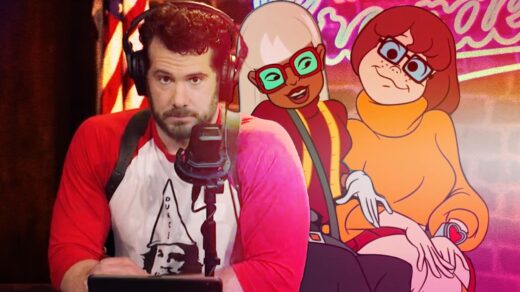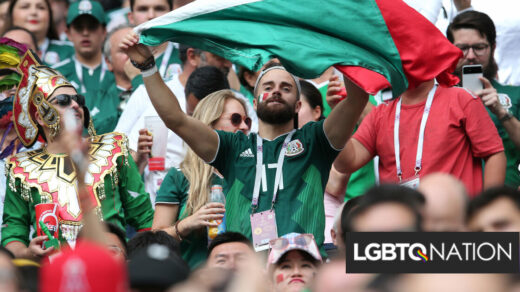Why Queer Visibility of ‘Happiest Season’ Matters
In February of this year, I traveled to Pittsburgh to visit the set of Clea DuVall’s holiday-themed romantic comedy Happiest Season, which stars Kristen Stewart (Abby) and Mackenzie Davis (Harper) as a couple navigating family dynamics at Christmas.
While on set at a country club where they were shooting a party scene, I marveled as DuVall quietly commanded the film. Despite the crowds of extras and the cast that included her stars Stewart, Davis, Mary Steenburgen, Victor Garber, Mary Holland, Alison Brie, and Aubrey Plaza, she sat down with me twice that evening to discuss the power of the story she was creating. With my focus continually on the history of LGBTQ+ representation (I was, after all, in the presence of a lesbian icon), I gently floated the narrative that making a mainstream holiday movie centered on a same-sex love story was completely radical. But DuVall was humble and she had a job to do. She wanted to tell the kind of story she had always wanted to see. Extras loaded their plates from the buffet behind us as we leaned in to talk to the soundtrack of clanging plates.
DuVall first came into my consciousness as the teen obsessed with The Wizard of Oz in 1999’s Girl, Interrupted. I recall I later rented her 1998 horror flick The Faculty on DVD. But it was her role as the smoldering cool girl Graham in Jamie Babbit’s now-classic satire, But I’m a Cheerleader (2000), where DuVall stopped me (and a lot of other queer women) in my tracks. Between bouts of howling with laughter, I couldn’t take my eyes off of DuVall as her character wooed Natasha Lyonne’s lesbian cheerleader.
Eight months after my visit to the Happiest Season set, after sheltering in place for more than half a year with the cat I’d just adopted, I received a screener link to Happiest Season for research to write for the Nov/Dec issue’s cover story. It was a bookend of sorts to the most bizarre year of many of our lives. Just as Happiest Season wrapped its shoot, it became clear that life as we collectively knew it would change with the rise of the pandemic and many deaths. But the trauma of 2020 didn’t end there. The killings of Black Americans at the hands of the police kicked off an overdue national reckoning around police brutality and systemic racism. A few months later, Justice Ruth Bader Ginsburg died, leaving many worried about her replacement. And there’s the 2020 election — results of which aren’t known as we go to press, but what is known is that it’ll determine the fate of the United States for a generation.
Today, though, within moments of pressing play on my screener for Happiest Season, I found myself “awing” over Harper and Abby. “They’re’ so cute,” I’m fairly certain I said aloud to no one. I belly-laughed at certain moments in the movie, especially at Holland’s portrayal of the outcast middle sister of an uptight family. And to my surprise, because I’ve always been vehement about not being a Christmas person, I cried watching Abby and Harper’s love story unfold to the backdrop of holiday iconography.
DuVall, who has offered visibility for queer women for 20 years since But I’m a Cheerleader was released, has tapped into something so visceral that I didn’t even realize I needed it. In short, Happiest Season got me. I choked up several times writing the cover story.
This year also sees the Hallmark Channel’s first queer holiday movie, The Christmas House, featuring a male couple in the process of adopting a child, and Lifetime’s The Christmas Setup, in which Fran Drescher’s matchmaking mom sets her gay son up with a guy from his hometown. These films are important not just to young people coming out but also to us older LGBTQ+ people who never saw themselves reflected in a holiday movie. After all, we deserve a happy ending.
Original Article on The Advocate
Author: Tracy E. Gilchrist





